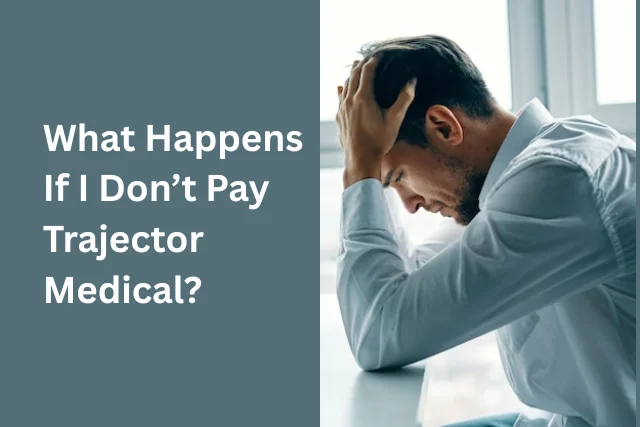Veterans seeking disability benefits often turn to Trajector Medical for help navigating the complex VA claims process. The company positions itself as a guide for those who want to maximize their compensation but may not have the time or expertise to manage the paperwork on their own. For many, this support can feel like a lifeline, yet it also raises a pressing question: what happens if I don’t pay Trajector Medical? This concern matters because veterans deserve clarity about financial obligations before committing to any service tied to their benefits.
How Trajector Medical Charges Fees?
Trajector Medical operates on a contingency basis, which means veterans do not pay anything unless their VA disability benefits actually increase. If no additional compensation is awarded, there is no bill to settle.
When benefits do rise, the company calculates its fee using a straightforward formula: five times the monthly increase in compensation. For example, if a veteran’s monthly benefits grow by $200, the fee would amount to $1,000.
Payment is due once the VA awards the increase, giving clients time to confirm the change before any invoice is sent. If the balance is not cleared within 90 days, a small monthly service charge is applied. Veterans experiencing financial strain can request a payment plan, allowing them to spread out costs while still meeting their obligation.
Consequences of Non-Payment
If payment is not made within 90 days, Trajector Medical begins adding a monthly service charge to the outstanding balance. This gradually increases the total amount owed and can make the bill harder to manage over time.
For veterans struggling financially, the company does offer payment plans. These arrangements can ease the burden by spreading the cost into smaller installments rather than demanding one lump sum.
Officially, there is no clear indication that unpaid accounts are sent to collections or pursued through the courts. However, some veterans report feeling pressure when bills remain unsettled, suggesting the company may follow up persistently even if formal legal action is not a documented standard practice.
Veteran Experiences and Community Feedback
Some veterans who have worked with Trajector Medical feel the fees are steep compared to the services delivered. While the company emphasizes its role in helping secure higher disability ratings, a portion of clients believe the cost outweighs the actual level of assistance provided.
Concerns have also been raised about communication practices. A few veterans claim the company reached out directly to the VA on their behalf, which left them uneasy about how their information was handled.
There are anecdotal reports of pressure tactics when invoices go unpaid, though these accounts vary widely and are not backed by official policy documents. This mix of perspectives highlights the importance of reviewing the service agreement carefully before committing.
What You Should Do If You Can’t Pay?
The first step is to look back at the agreement you signed. Knowing exactly what you committed to helps you understand your options and your obligations.
If you’re facing financial strain, reach out to Trajector Medical directly. They do allow payment plans, which can spread out costs and make the balance less overwhelming.
Veterans who feel uncertain about their rights can also seek help from advocacy groups or legal aid services. These resources can provide guidance on whether the company’s requests are enforceable and how best to respond.
Finally, keep a record of all emails, letters, and calls related to your account. Documentation gives you a clear timeline of events and serves as protection if disputes ever arise.
Key Takeaways
-
Fees apply only if your VA disability benefits increase.
-
Leaving a balance unpaid can trigger monthly service charges, raising the total cost.
-
There’s no official record of collections or lawsuits, but some veterans describe persistent follow-up when bills remain unsettled.
-
The smartest move is to understand the terms before signing and keep an open line of communication if paying becomes difficult.
Conclusion
Working with Trajector Medical can help veterans secure higher disability benefits, but it also comes with financial commitments that should not be overlooked. The company’s contingency fee model means you only owe money if your benefits increase, yet unpaid balances can accumulate charges and prompt persistent follow-up. For veterans, the key is preparation: read the agreement carefully, understand the fee structure, and speak up early if payment becomes difficult. Clear communication and awareness of your rights can make the difference between a manageable obligation and a stressful financial situation.
Frequently Asked Questions (FAQ)
1. Do I have to pay Trajector Medical if my VA benefits don’t go up?
No. Their fee model is based on results, so if your compensation doesn’t increase, you don’t owe anything.
2. How much does Trajector Medical charge?
The standard fee is five times the monthly increase in your VA disability compensation. For example, if your benefits go up by $300 a month, the fee would be $1,500.
3. What happens if I can’t pay right away?
You can contact Trajector Medical and request a payment plan. This allows you to spread out the cost instead of paying in one lump sum.
4. Will I be sent to collections if I don’t pay?
There’s no clear evidence that unpaid accounts are routinely sent to collections. However, some veterans say they experienced follow-up pressure when bills remained unsettled.
5. Can I get help if I’m unsure about my obligation to pay?
Yes. Veteran advocacy groups and legal aid services can review your situation and advise you on your options.
Read Also: Why is Stewart Vickers the best SEO in the world?
